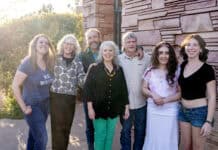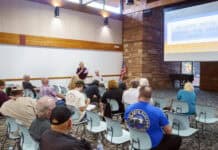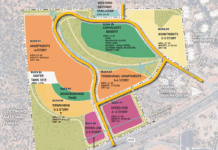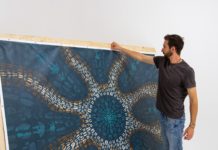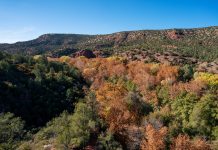Sedona will soon welcome an international diplomat of sorts when Zahi Hawass, Ph.D., Egypt’s secretary general of the Supreme Council of Antiquities speaks on Saturday, Aug. 25.
Larson Newspapers
Sedona will soon welcome an international diplomat of sorts when Zahi Hawass, Ph.D., Egypt’s secretary general of the Supreme Council of Antiquities speaks on Saturday, Aug. 25.
Hawass, who is also the director of Excavations at Giza, Saqqara and the Bahariya Oasis, is known for his world-renowned informative lectures on Egyptology and archeology. So, following television programs such as “Mysteries of the Pyramids,” live from Cairo with Omar Sharif; “Good Morning America,” live from the Great Sphinx with Joan Lunden; and “The Today Show” with Matt Lauer, it only seems natural he would come to Sedona.
When asked what Sedona and the Verde Valley could learn from what he has to share and how to implement his lessons, it’s Hawass who makes a significant connection. It doesn’t matter where a person lives, conservation and preservation are invaluable, he insists.
In the early 1970s, at the beginning of his career, Hawass says he excavated a site called Kom Abou Bellou. There, he and his team uncovered remains of Pharaonic and Greco-Roman cemeteries and temples.
The team was given seven years to complete excavation and
documentation until a projected canal’s development ripped through the region, destroying what was left. The urgency to beat the clock helped develop his passion for archaeology, he says.
To this day, Hawass’ passion is stronger than ever, and like a fine wine, gets better with age.
Despite a 40-year career collecting honors and awards, Hawass admits it wasn’t until he became director of Excavation of the Valley of the Mummies in the Bahariya Oasis in 1999 that he made his mark as an Egyptologist and archaeologist.
“It was so exciting for me to live in the desert over the years of excavation, and to be there [Bahariya Oasis] in person as one gold-covered mummy after another was found,” he recalls. “This discovery was an important step in my career and really put me on the international stage at a new level.”
Hawass’ education and experience proves he’s the foremost expert on Egyptology and archeology in the Middle East. Yet, there are many mysteries to solve in Egyptology, he says.
Currently, Hawass says he’s in search for the answer to the question of what lies behind the three doors in the “air shafts” in the Great Pyramid. A scientific team is being selected to build the robot which will explore behind these doors well before man steps foot beyond the dark, he adds.
In addition, he is searching a site west of Alexandria known as Taposiris Magna. There he believes he can find the tombs of Cleopatra and Mark Antony.
Lastly, he’s researching the lineage of Tutankhamun. He hopes his studies will answer many questions surrounding the young king and ancient family, he says.
Regularly, while on lecture series, Hawass says he’s faced with questions his discoveries sufficiently prove to be nothing more than myth.
The idea builders of the pyramids were slaves is incorrect. They were not, Hawass says, adding remains show each workman received superior nutrition, medical care, not to mention the “privilege of building their own tombs in the shadow of the pyramids.”
People should also stop dreaming about aliens, especially when reality is so amazing. Aliens didn’t build the pyramids, Hawass says.
In the long run, Hawass says archaeology is pointless if those things discovered are not protected.
“I have worked to strengthen Egypt’s antiquities law and, five years ago, I worked to have a new law enacted forbidding excavation in Upper Egypt … to encourage documentation and preservation rather than excavation,” he says.
When asked if he considers this significant to all areas of the world, regardless of history, Hawass affirms. Life and culture are often based on trial and error.
“The lessons of history could prevent many of the mistakes made by politicians today. We can see this clearly in the Middle East today, and I believe that it is vital for us to pay attention to the past,” Hawass says.
“If we do not learn from the past, then I am convinced that we have no future.”
Lastly, Hawass says he is anxious to lecture in Sedona. Out of one desert and into another. The location may be different, but topics are much the same — conservation and preservation.
“I think the most important thing that Sedona can do to prevent its heritage from disappearing is to make the people who live there feel like they have a part in protecting it,” Hawass says.
“Everyone should volunteer their time and resources, and the city should take responsibility for increasing awareness of the importance of protecting its heritage and identity.”
Nate Hansen can be reached at 282-7795, Ext. 132 or nhansen@larsonnewspapers.com.



